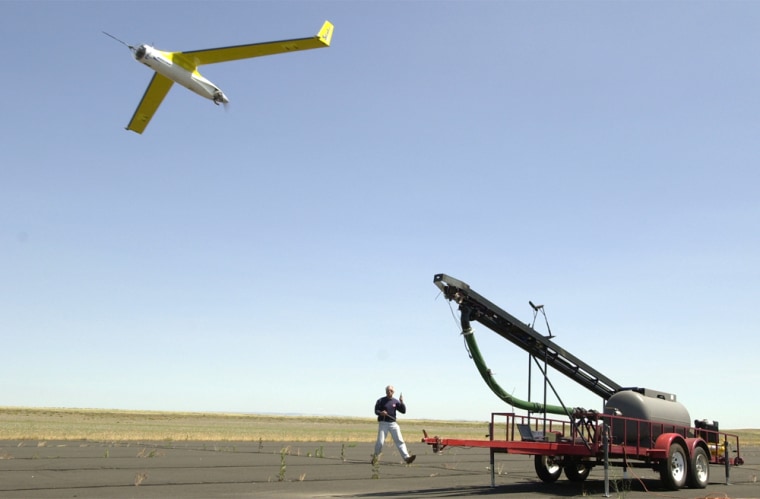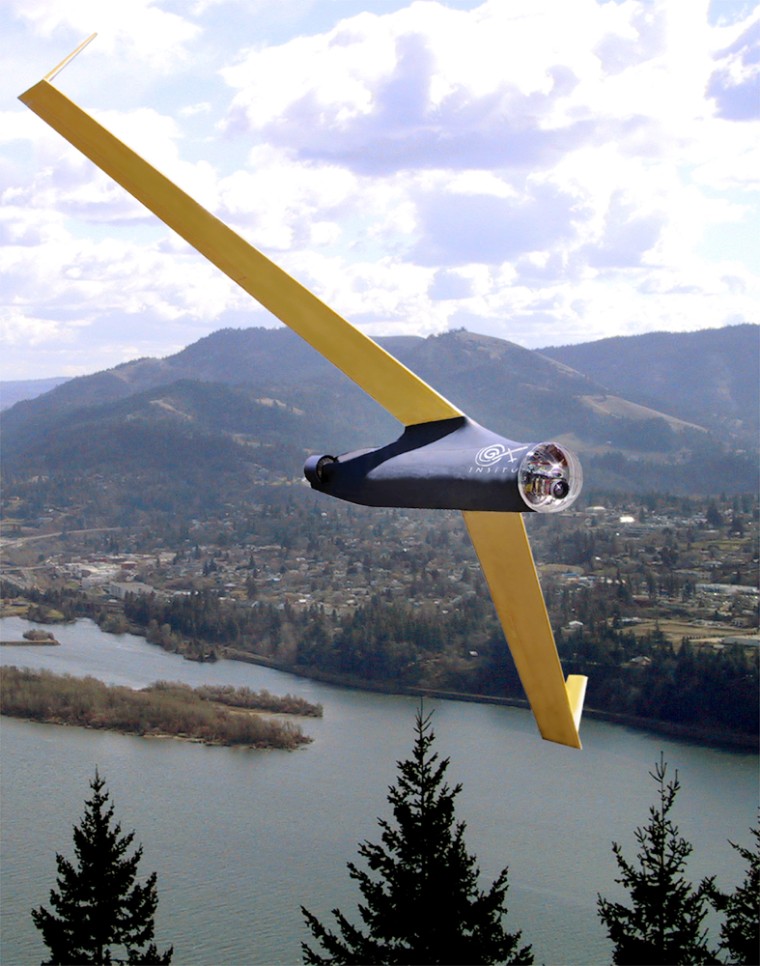At first or even second glance, this sleepy town on the Columbia River gives few hints of its appointment as a high-tech haven. With a population just shy of 700, no pocket-protected armies are massing at the local convenience store. But Bingen, it is said, has more aerospace engineers per capita than Seattle.
Inside a nondescript building on the river bank, Insitu Group’s employees are designing a new generation of unmanned aerial vehicles (UAVs). Though its staff of just over 30 is miniscule — but a big leap from the three-person team it was just three years ago — it has backing from some of the deepest pockets in corporate America.
The biggest shadow behind Insitu’s curtain is Boeing. Behind that potentially odd coupling lies a certain wisdom. “It’s been a godsend for both organizations,” says CEO Steve Sliwa. “We bring what they don’t have. They bring what we don’t have.”
UAVs are revolutionizing military aviation. Small and remotely piloted, like outsized model planes for soldiers, they can fly combat or surveillance missions without putting pilots in harm's way.
Insitu has plenty of competition in the UAV market — mostly from the big boys. Northrop Grumman’s Global Hawk, costing an estimated $15 million a plane, provides high-altitude reconnaissance and was used in Afghanistan. General Atomics Aeronautical Systems' Predator drone, at $25 million per system, earned a name for itself after it was fitted with missiles and used over Iraq and Yemen.
Boeing already had its own UAV plans when it approached Insitu, notably its development of the X-45A UCAV (Unmanned Combat Air Vehicle), a sort of pilotless fighter jet. Boeing’s UCAV test project, conducted jointly with the Pentagon’s Defense Advanced Research Projects Agency, is already budgeted at $131 million and meant to serve as an advanced fighter.
Insitu had no interest in competing for those markets; it wanted smaller, smarter and cheaper. Its ScanEagle military surveillance drone, now in full production, carries a price tag around $70,000.
Nope, no zeroes missing. Insitu's small-biz savvy and use of inexpensive components help it build technology at prices so small they amount to Pentagon pocket change. ScanEagle’s electronics are built entirely from off-the-shelf parts; some composite pieces are constructed by surf equipment makers. Steve Nordlund, vice president of business development, shows off ScanEagle’s recovery system, crafted from a Genie package lifter. “You can actually go to Home Depot and rent this,” he says.
Insitu's UAVs, with a wingspan of under nine feet and a loaded weight of about 35 pounds, can easily be packed into a six-foot box. They launch from a portable catapult with 12 G-forces of thrust, immediately zooming the small craft to its 50-knot cruise speed. Using a tiny engine that sips fuel by the drop and almost fits in the palm of your hand, the ScanEagle A can remain aloft for over 15 hours, rivalling the endurance of the far larger Predator; new models are being designed to fly for over 45 hours at a time. (Aerosonde, a drone designed by Insitu founder Tad McGeer, set a record in 1998 when it became the first unmanned airplane to cross the Atlantic. It made the 26-hour crossing on a gallon and a half of fuel.)

The method to land these planes is even more stunning. Flying at cruise speed, a drone approaches a dangling 50-foot rope. When its leading wing edge senses the rope, the plane immediately slows to a stop; hooks on either end of the wing grab hold and the plane slowly falls to the ground. No runway needed.
And just two people, using laptops and a relay, can fly up to five of Insitu’s UAVs at a time. On-board GPS units can be programmed to trace a flight path or to hover over a specific location. A tiny, intertially stabilized camera sends back live airborne video. The idea was to make ScanEagle small and cheap enough that they can be handed out to small units of soldiers and easily launched. Though they fly low — under 16,000 feet — the price tag makes it a minor drawback if one is shot down. “If you lose one, we’ll make more,” Nordlund says.
Though its deal with Boeing helped put Insitu into the game, the firm hasn’t sold a stake to the aerospace giant. (Boeing can exclusively market Insitu vehicles to the government for 10 years and take a share of profits. That means it can sell off-the-shelf functional UAVs to military customers without big development costs.) And Insitu doesn't want to just be a tiny slice of Boeing's pie.
As Nordlund puts it, “We don’t consider ourselves successful if we just sell ScanEagles.” Insitu has leaped ahead of many other UAV makers, advancing its belief that its planes also should be sold in the larger marketplace. McGeer conceived Aerosonde in the early 1990s as a way to cut costs in weather monitoring and Insitu’s first commercial UAV, SeaScan, was built to operate off commercial fishing trawlers. Large fishing boats currently fly helicopters to find stocks of tuna and other fish; Insitu pitches SeaScan as a cheaper, safer alternative. Capitalizing on the portable launch and recovery systems, it is also creating drones to perform land surveys.
Indeed, the planes' payload bays accomodate swappable hardware and software and can be tailored to detect whatever a customer wants to see from the air. Insitu engineers can simply design and drop in new equipment as companies dream up new uses. “It’s a matter of adding a need,” McGeer says. “Somebody comes along and says, ‘Here’s a need.’”
Insitu already is in limited production of its commercial planes and has its first commercial customer. (It won't say who until the customer announces the purchase.) The company forecasts building up to 100 UAVs a month, but has little interest in simply churning drones in bulk. Rather, it wants to stay small, with most of its engineers doing hands-on design work. Computerized prototyping systems allow designers to do much of their work from Insitu's tiny jeans-and-sneakers headquarters while McGeer’s Labrador retriever Moesha -- “our VP of security,” Nordlund deadpans -- naps by the front door.
“We really want to be a company that leverages intellectual property,” Sliwa says.
To be fair, Insitu is getting help from friends with deep pockets. Not only is there the Boeing deal (the exact terms remain a secret) but it collected at least $4 million last year from Second Avenue Partners, former Microsoft vice president Pete Higgins’ venture capital firm.
Its rural location helped too. If Bingen happens to be where McGeer wanted to continue his weather research in the mid-1990s, it also qualified Insitu for special tax breaks and rural development deals. Even so, its location -- an hour east of Portland, Ore. -- provides workers’ families proximity to a major city. Being in one of the world’s premier windsurfing spots helped too, generating piles of résumés from envious engineers; nearly half of the staff has taken on the quick currents of the Columbia.
Yet Insitu has enough distance from its big partners to feel comfortable in a setting where agriculture generates far more cash than aerospace. “You’re close enough,” Nordlund says, “but you’re also far enough away that you don’t get Boeingized.”
If it can maintain that balance, little guy Insitu seems poised to score in a big-time industry.
